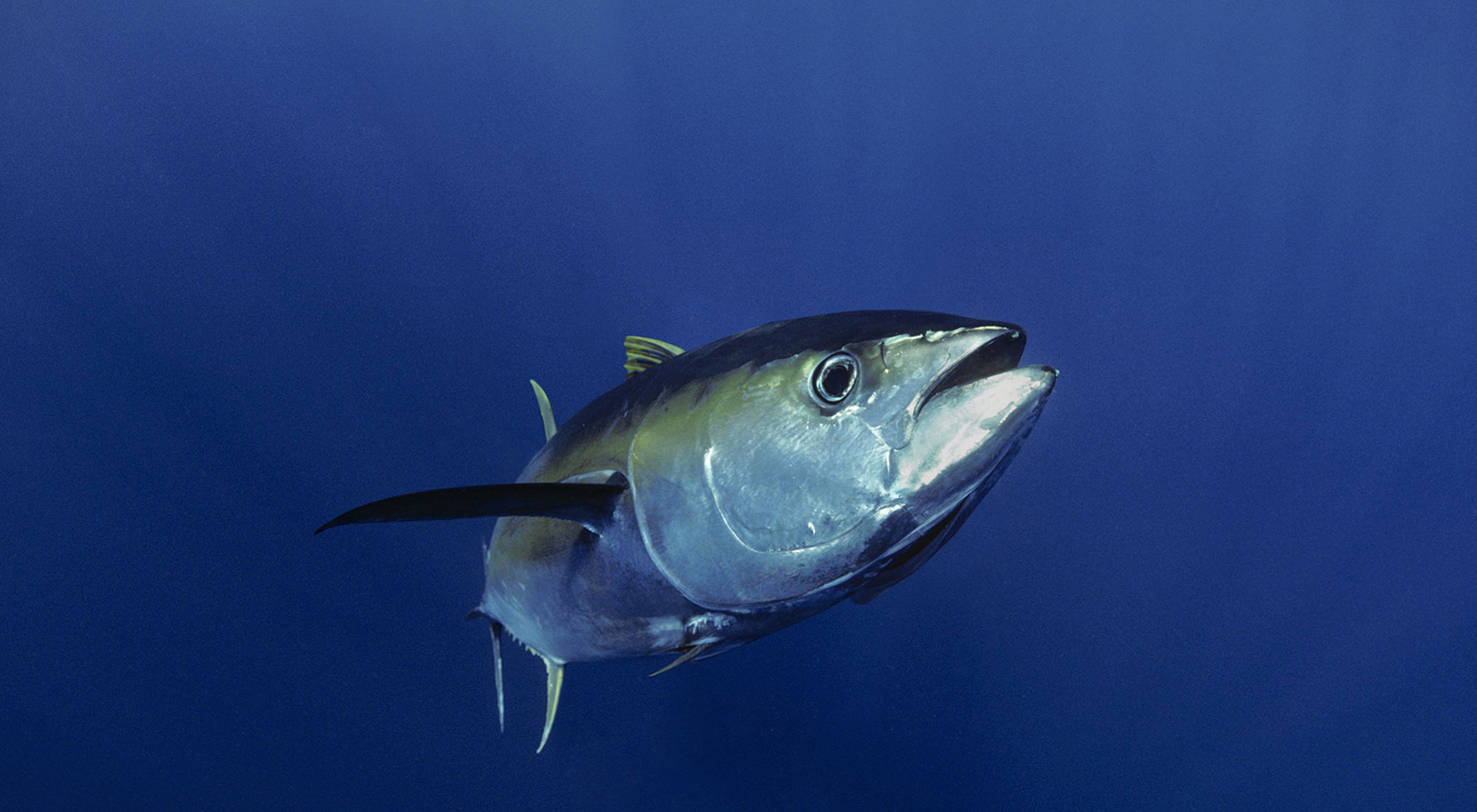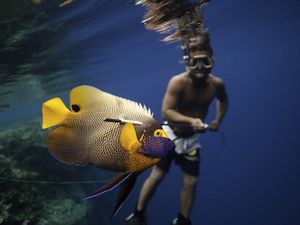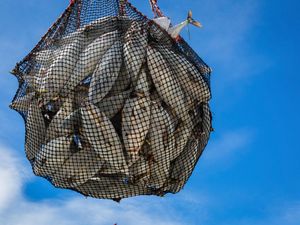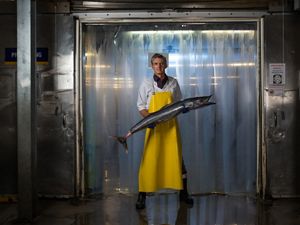Stories in the Pacific Islands
Transforming Tuna Fisheries in the Pacific
Helping move the world’s largest tuna fishery from unsustainable to attainable
For millions of people around the world, tuna fish is a regular part of their diet and important protein source.
The waters of the Western and Central Pacific Ocean produce 60 percent of the world’s tuna—a haul of nearly 3 million metric tons worth almost $7 billion each year. But overfishing and illegal fishing activities threaten to disrupt the global seafood supply and crush Pacific Island economies that rely heavily on tuna revenues.
The Nature Conservancy (TNC) is driving innovation to make a difference across this vital and expansive region. By focusing on improving oversight of fishing activities, restructuring supply chains and integrating fisheries and marine spatial planning, we envision building healthy and sustainable tuna fisheries, reducing bycatch of vulnerable species, decreasing illegal, unreported and unregulated (IUU) fishing, and improving socio-economic returns for Pacific Island nations.
We are working with industry partners, governments and multi-national coalitions to deploy cutting-edge electronic monitoring that provides needed oversight of commercial tuna vessels. Using motion sensors and GPS systems with cameras, government and industry players can see what species are being brought on board. These investments not only provide a lifeline to an ailing ecosystem but also help regional leaders create more informed—and more sustainable—fishery policies.
TNC is also taking a big step towards transforming the existing tuna supply chain by creating a new vertically integrated, sustainable end-to-end tuna supply chain company called Pacific Island Tuna. The goal of this initiative is to reduce bycatch of baby tunas and at-risk species and to create a sustainable funding source for community-based conservation projects in the region. As a Republic of Marshall Islands based company, Pacific Island Tuna will ensure that Pacific Island countries have direct ownership of their tuna catch from the dock to retailers and that a portion of net income flows to community-based conservation projects.
The project will partner directly with local government and communities, embed rules into vessel contracts to drive sustainable fishing practices and provide retailers with unparalleled levels of visibility in exchange for long-term, mutually beneficial, supply contracts.
Our multi-faceted approach will help stabilize regional ecosystems, protect the world’s tuna supply and preserve local cultural traditions. TNC’s work is grounded in direct engagement with willing governments, fishers, supply chain actors and regional and global partners to implement and scale up targeted, sustainable management solutions. And we could not achieve our goals without the critical support and input of Pacific Island nations and Indian Ocean partners, as well as support from the Prince Albert II of Monaco Foundation.

Micronesia Challenge: 30, 20, One Micronesia
Micronesia has committed to 100 percent transparency for its globally significant tuna fishery, and challenged its fellow Pacific Island nations to follow suit. Learn More
Dive Deeper
-
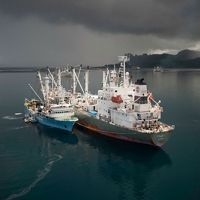
Transforming the Last Tuna Stronghold
A high-tech reboot has the power to stop unsustainable longline fishing—and preserve the Pacific Ocean for future generations. Read more.
